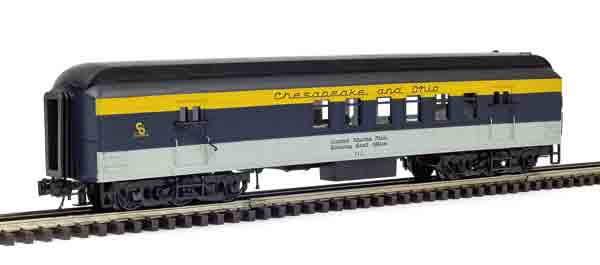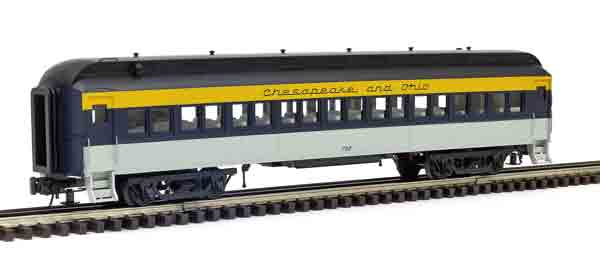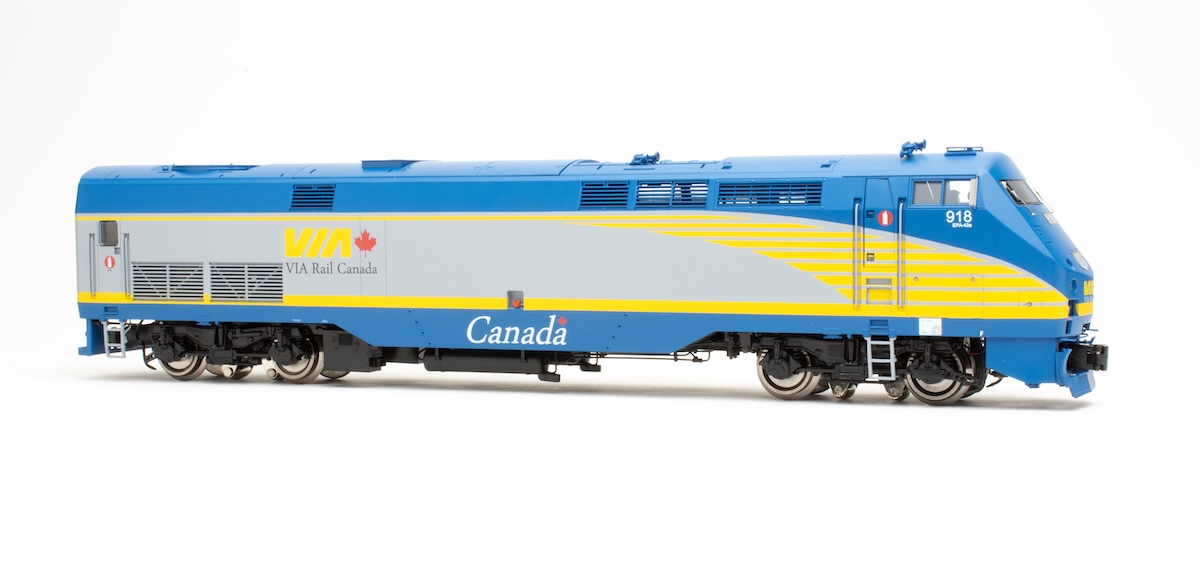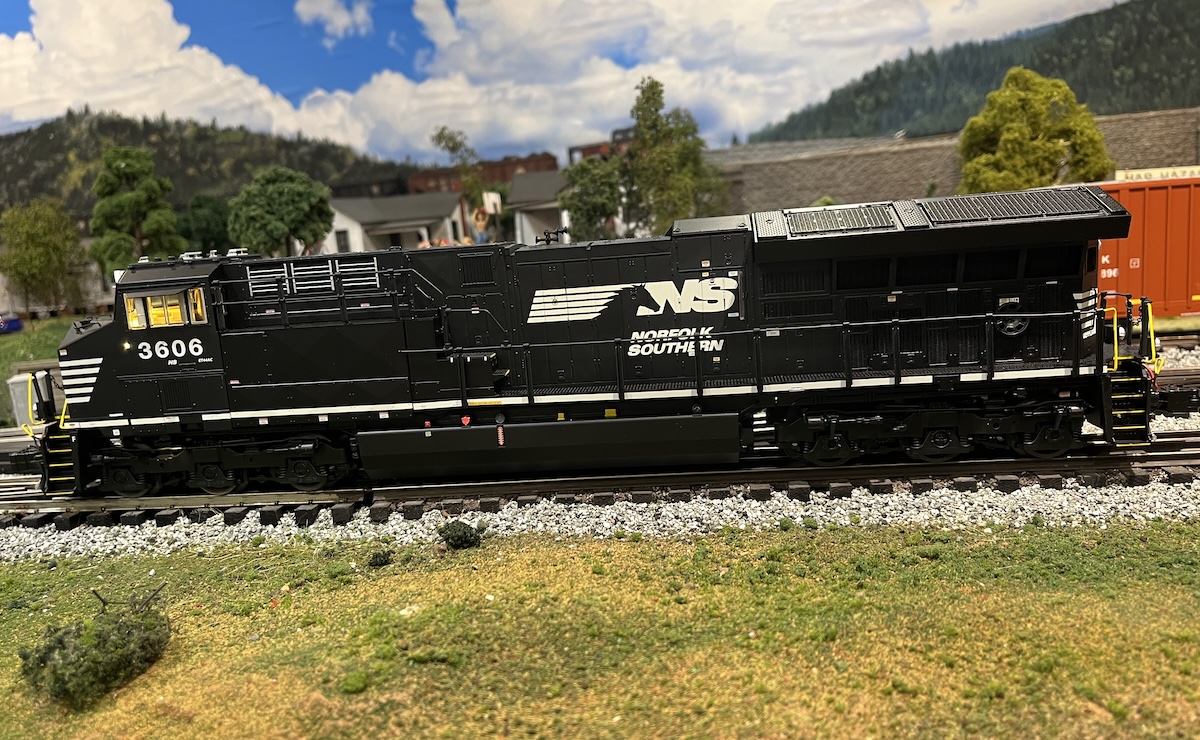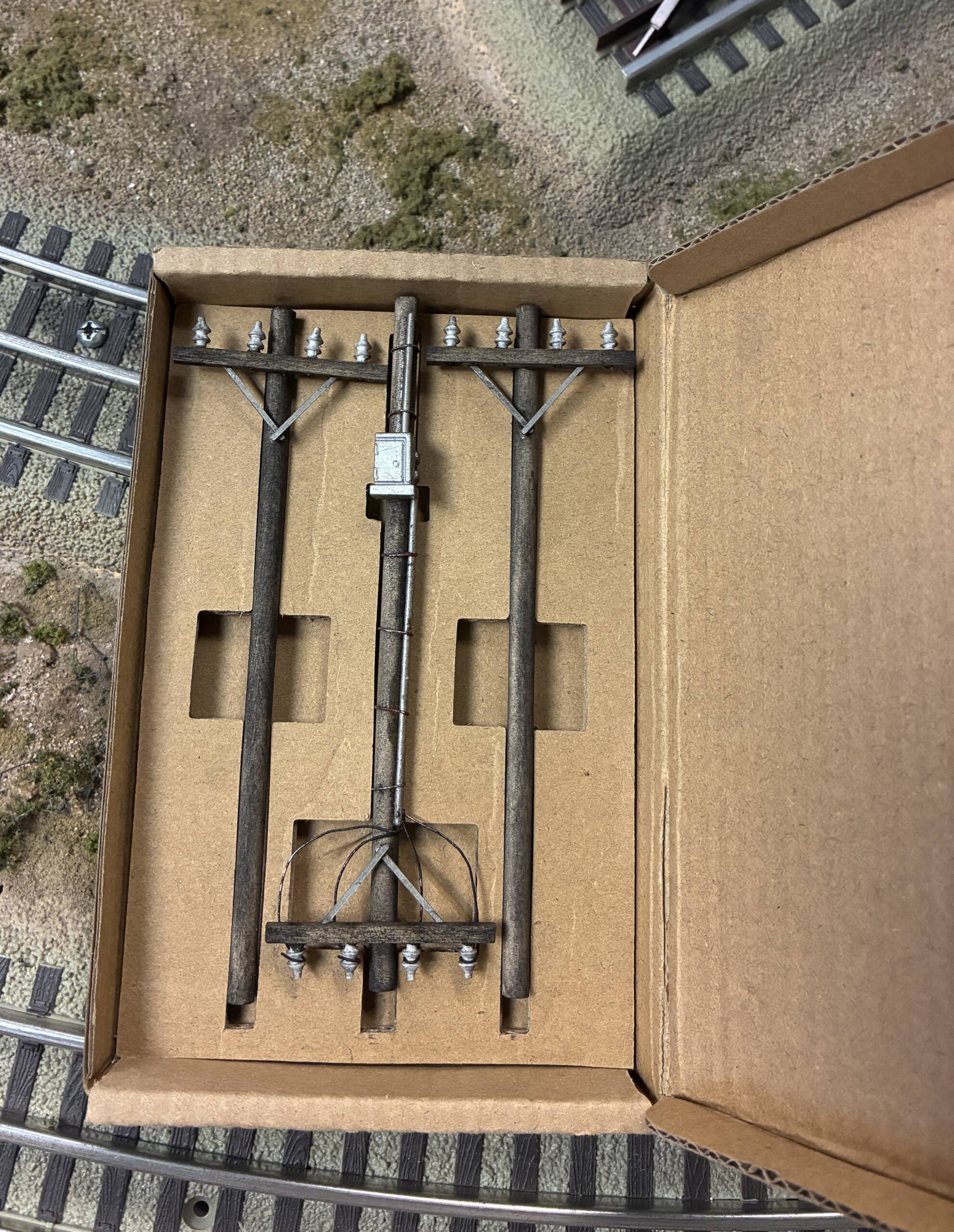Price: $99.95 each (Railway Post Office car, baggage car, combine, coach)
Features: O-36 operation, plastic construction, die-cast metal trucks and couplers, interior decoration and illumination, separately applied diaphragms
Current run road names: Burlington Route, Central RR of New Jersey/NJDOT, Chesapeake & Ohio, Milwaukee Road, New York Central
Passenger cars are longer than most freight cars; therefore, operators may have to be more selective in what cars they acquire. So the cookie-cutter four- or five-car boxed set may mean buying a car or two that will never be used. This is one reason I find the Atlas O Trainman line of 60-footers so appealing. You can buy the cars individually and make up the passenger consist you really want.
This is the second run of the Atlas O Trainman line 60-foot passenger cars, and it offers quite a bit of head-end equipment: Railway Post Office car, baggage car, combine car, and coach. While so far there are no diners, sleepers, or observation cars, this is more than enough to cover your O gauge railroad’s summer vacation traffic.
The rolling stock offered by Atlas O has the fixings to emulate a short-hop train from, say, Chicago to Springfield, Cincinnati to Columbus, or Boston to Albany.
Car construction
The Trainman O gauge coaches are scale-size replicas based on Chicago & North Western prototypes. The RPO and baggage cars are six-axle rigs, while the coach and combine cars are four axle-models.
These are steel-sided heavyweights with ample rivet detailing on the sides. The cars have the classic clerestory roof – the one with the distinctive hump. I’ve always had a mental notation that suggests these are pre-streamline era cars, but that’s hardly the case. These are timeless designs, so using these cars won’t date your railroad as “So 1930s.”
The coach has doors on four corners, and there are nicely designed steps leading up to them. You’ll find add-on grab irons to help the passengers climb up.
Each side of the coach has 18 passenger windows, and a small window in each cast-in door. The other cars have doors/windows as appropriate.
The cars come with diaphragms already attached, but they also include a second pair. A replacement if you lose one? Nope. The sets are different lengths. One is longer than the other, so if you desire a minimal gap between cars you use one pair – a wider gap (more useful for tight-radius operations) you use the other. Pretty nifty.
The RPO car
Starting in 1964 and lasting until 1977, the U.S. Postal Service, through the Railway Mail Service, hauled and sorted mail in-transit. Even in later years when a great bulk of mail was carried in flexi-van containers, priority mail was still sorted by pistol-packing mail clerks.
I wasn’t expecting much interior decoration on the RPO car, but, to my surprise, there were mail-sorting stations clearly visible through the windows.
The car has two die-cast metal three-axle trucks. You’ll find extra-wide steps at the mail-loading and bag pickup doors. Simulated mail pickup arms are attached to the forward side doors.
The baggage car
The baggage car is another large six-axle job. Why six axles? Presumably, like the heavyweight trucks on the RPO car, the axles would better distribute the weight of the cargo (general luggage, steamer trunks, coffins, and assorted express goods like newspaper bundles and full milk cans).
The car has end-of-car brakeman’s steps, add-on grab irons and vent stack, and basic underbody detailing, such as battery boxes. The doors are cast in, and each has four windows. All the cars have diaphragms installed.
There might be some interior detailing, but I couldn’t see any through the small door windows.
The car has great rivet and seam detailing, and the classic Chesapeake & Ohio gray, blue, and yellow paint scheme was well executed. If you don’t like passenger trains, this car would be a great addition to your C&O/B&O or Chessie System work or wreck train.
The combine car
The combine has about half its space allocated for baggage or express goods, and half for passengers. The passenger compartment has seating (I counted 18 seats through the windows), and there is a bulkhead separating the passengers from the cargo. There are two lavatories in the car, one with a window and the other facing an exterior bulkhead. Yes, if you look through the window of the one lounge you can see restroom fixtures! No, trying to insert a seated figure isn’t necessary.
As with the other cars, the clerestory roof has nine subtle vent screens cast into the sides of the “the hump.”
The combine car has two two-axle trucks. The car has end-of-car brakeman’s steps, add-on grab irons and a two-vent stack, and basic underbody detailing, such as storage tanks and brake-line piping. The doors are cast in.
As with the baggage car, the combine would be great on a work or wreck train, or it could be the key piece for running a short mixed freight and passenger train!
The coach
The core of a passenger train isn’t the sleeper, lounge car, or even the diner. The coach is where you find the bulk of the people moving from point A to point B. The plain old, basic Atlas O coach is a solid representation of the car all passengers need to get on to go somewhere.
I counted 31 conventional seats and what appears to be lounge seating across from each of the lavatories. The car has two lavatories, one with a toilet and washbasin and the other with a toilet. Both are observable through the window.
There are no passenger or crew figures inside, but seated O scale passengers aren’t hard to find these days. You can fill your passenger compartment to rush hour full or mid-week sparse. The coach has two two-axle trucks.
Ready for service
The Trainman line passenger cars give the O gauge operator scale-sized cars with good levels of detail, selective add-on detailing, and interiors you can see (and populate with passengers) without breaking the bank.
The fact that the cars are sold individually means you can build your own passenger train to match a historic consist or to suit the flavor of your railroad.
If you have a notion about replacing your old “window insert silhouette” cars, you may want to check these out before making the plunge!





